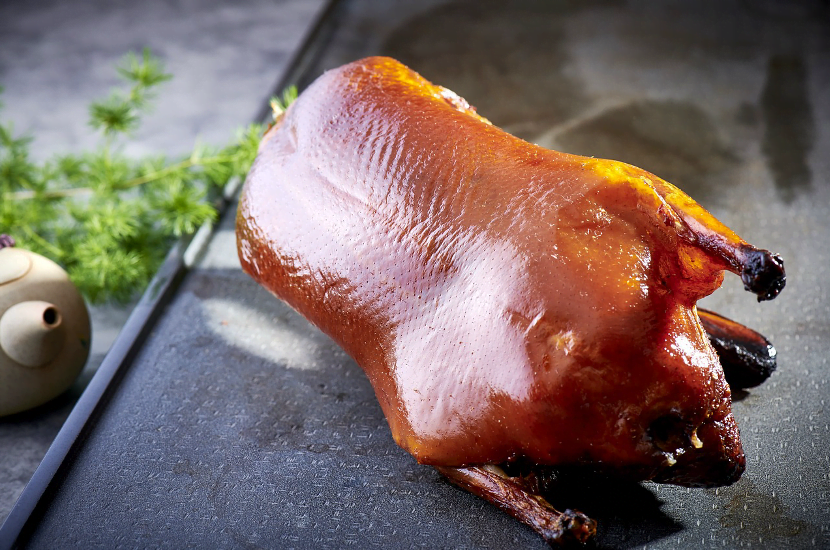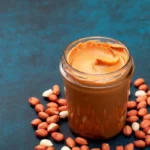
Peking Duck is a renowned dish known for its crispy skin, tender meat, and elaborate preparation. Originating from Beijing, China, this culinary masterpiece has captivated diners with its unique flavor and texture. From its historical significance to its place in modern dining, Peking Duck continues to be a symbol of Chinese cuisine’s rich traditions and sophistication. Here are some intriguing and verified facts about this celebrated dish, including its cost, preparation process, and cultural recognition.
Origin: Peking Duck has its roots in Chinese culinary history, dating back to the Yuan Dynasty (1271–1368). This period marked significant cultural exchanges and developments in cuisine. Originally, it was a dish served to the imperial court, showcasing the sophistication of Chinese cooking techniques. The dish was refined over the centuries, particularly during the Ming Dynasty (1368–1644), when it became a favorite among emperors and was served in the Forbidden City, cementing its status as a prestigious dish in Chinese culture.
Cooking Method: The traditional preparation of Peking Duck is a meticulous process that can take up to 24 hours. The duck is first air-dried, which allows the skin to become taut, a crucial step for achieving the desired crispiness. Afterward, the duck is roasted in a wood-fired oven, where the smoke infuses the meat with a unique flavor. The cooking method is essential, as it not only enhances the taste but also creates the characteristic crispy skin that Peking Duck is renowned for.
Weight: A typical Peking Duck weighs between 2 to 3.5 kilograms (4.4 to 7.7 pounds). This weight range is ideal for roasting, as it allows for an even cooking process while ensuring that the meat remains tender and juicy. The size of the duck is important, as it influences the texture and flavor of the final dish, with larger ducks often providing more meat but potentially compromising the skin’s crispiness if not cooked properly.
Serving Style: Peking Duck is traditionally served with thin pancakes, hoisin sauce, and sliced scallions. The pancakes, often made from wheat flour, serve as a wrap for the duck, allowing diners to create their own rolls. The hoisin sauce adds a sweet and savory flavor, while the scallions provide a fresh, sharp contrast. This combination of ingredients enhances the overall dining experience, allowing for a balance of textures and flavors in each bite.
Crispiness: The hallmark of Peking Duck is its incredibly crispy skin, which is achieved through a specific roasting technique. After the duck is air-dried, it is often coated with a mixture of maltose and vinegar, which caramelizes during roasting to create a glossy, crispy exterior. The skin is so prized that it is often served separately from the meat, allowing diners to appreciate its unique texture and flavor. Achieving the perfect crispiness requires skill and experience, making it a celebrated aspect of the dish.
Cultural Significance: Peking Duck holds a prominent place in Chinese culture, often served at banquets and special occasions. It symbolizes wealth, prosperity, and good fortune, making it a popular choice for celebrations such as weddings and Lunar New Year festivities. The dish’s historical association with emperors and its presence at significant cultural events have contributed to its status as a national treasure in China, reflecting the importance of food in cultural identity.
Famous Restaurant: Quanjude, established in 1864, is one of the most renowned restaurants serving Peking Duck in Beijing. With a history spanning over 150 years, Quanjude has become synonymous with the dish, attracting both locals and tourists. The restaurant is known for its traditional cooking methods and high-quality ingredients, ensuring that each duck is prepared to perfection. Quanjude has expanded its influence, with multiple branches and a reputation that has made it a must-visit destination for anyone seeking an authentic Peking Duck experience.
Popularity: Peking Duck is considered one of China’s national dishes and enjoys immense popularity both domestically and internationally. Its rich flavor and unique preparation have made it a favorite among food enthusiasts worldwide. Many Chinese restaurants outside of China feature Peking Duck on their menus, showcasing the dish’s ability to transcend cultural boundaries. Its growing recognition has led to adaptations in various cuisines, making it a global culinary icon.
Duck Breeds: The Pekin duck, originally from the United States, is the most commonly used breed for Peking Duck. Known for its tender meat and flavorful skin, the Pekin duck has become the standard choice for this dish due to its size and quality. The breed is characterized by its white feathers and orange beak, and it has been selectively bred for its meat production capabilities. The use of Pekin ducks in Peking Duck preparation has contributed to the dish’s distinct taste and texture.
Historical Figures: Peking Duck was a favored dish among emperors in the Forbidden City during the Ming and Qing Dynasties. Historical records indicate that the dish was a prominent feature at royal banquets, reflecting the culinary sophistication of the period. The meticulous preparation and presentation of Peking Duck, involving a precise roasting method and elaborate serving style, showcased the grandeur and refinement of the imperial court. Its association with royalty not only elevated the dish’s status but also made it a symbol of luxury and exclusivity. This prestigious reputation has endured, cementing Peking Duck’s place as a quintessential representation of Chinese haute cuisine.
Global Recognition: In 2008, Peking Duck was included in the list of the top 10 Chinese dishes by the Chinese government, highlighting its significance in Chinese cuisine. This recognition not only reflects the dish’s historical and cultural importance but also its role in promoting Chinese culinary arts on a global scale. The inclusion of Peking Duck in this prestigious list has helped to raise awareness and appreciation for this iconic dish, encouraging both locals and tourists to experience its unique flavors.
Cooking Temperature: The ideal roasting temperature for Peking Duck is around 220°C (428°F). This high temperature is crucial for achieving the perfect balance between a crispy skin and tender meat. Roasting at this temperature allows the fat beneath the skin to render properly, resulting in a beautifully golden and crispy exterior while keeping the meat moist and flavorful. The precise control of temperature is essential in traditional preparation methods to ensure the dish meets culinary standards.
Skin-to-Flesh Ratio: The skin of a well-prepared Peking Duck should be approximately 20% of the total weight. This ratio is significant because the skin is the star of the dish, and achieving the right balance between skin and meat is essential for the overall experience. The crispy skin, when paired with the tender meat, creates a delightful contrast in texture, which is a hallmark of Peking Duck. Chefs often focus on maintaining this ratio to ensure that diners enjoy the full spectrum of flavors and textures.
Peking Duck Festival: An annual Peking Duck Festival is held in Beijing, celebrating the dish with various events and tastings. This festival brings together chefs, food enthusiasts, and tourists to explore the rich history and culinary techniques behind Peking Duck. Attendees can enjoy tastings, cooking demonstrations, and competitions, all centered around this iconic dish. The festival not only honors the cultural significance of Peking Duck but also promotes culinary tourism in Beijing.
Culinary Technique: The duck is often blanched in boiling water before roasting to help achieve the crispy skin. This technique involves immersing the duck in boiling water for a brief period, which tightens the skin and helps to render some of the fat. After blanching, the duck is air-dried and then roasted, allowing for the perfect combination of crispy skin and juicy meat. This step is a critical part of the preparation process and is one of the reasons why Peking Duck is so highly regarded.
Serving Quantity: A whole Peking Duck typically serves 2 to 4 people. The serving size is designed to allow diners to enjoy the dish as part of a larger meal, often accompanied by various side dishes and accompaniments. The generous portion size reflects the dish’s status as a centerpiece for communal dining, where sharing food is an integral part of the dining experience. This communal aspect enhances the enjoyment of Peking Duck, making it a popular choice for gatherings and celebrations.
Hoisin Sauce: The sauce served with Peking Duck is made from fermented soybeans, sugar, vinegar, and various spices. Hoisin sauce adds a rich, sweet, and savory flavor that complements the duck’s crispy skin and tender meat. The sauce is typically spread on the thin pancakes before adding the duck and scallions, enhancing the overall taste of each bite. Its unique flavor profile is an essential component of the Peking Duck experience, making it a beloved accompaniment.
Scallion Length: Scallions served with Peking Duck are usually cut into strips about 10 centimeters (4 inches) long. These fresh scallion strips provide a crisp, refreshing contrast to the rich flavors of the duck and hoisin sauce. The length of the scallions is intentional, as it allows diners to easily wrap them in the pancakes along with the duck, creating a balanced bite. The use of scallions not only enhances the dish’s flavor but also adds a vibrant color to the presentation.
Historical Documentation: The earliest written record of Peking Duck can be found in a book published during the Ming Dynasty in 1570. This documentation highlights the dish’s long-standing significance in Chinese culinary history and its evolution over the centuries. The mention of Peking Duck in historical texts underscores its importance as a dish enjoyed by the elite and its role in shaping the culinary landscape of China.
International Influence: Peking Duck has inspired various adaptations worldwide, including in Chinese restaurants in the West. Its popularity has led to creative interpretations of the dish, with chefs experimenting with different cooking techniques and flavor profiles. While the traditional preparation remains highly regarded, these adaptations showcase the dish’s versatility and ability to resonate with diverse culinary preferences. Peking Duck’s global influence has made it a symbol of Chinese cuisine, celebrated in various forms around the world. In cities like New York, London, and Sydney, Peking Duck has been embraced and adapted to local tastes, leading to innovative takes on the classic dish. Chefs in these locations often incorporate regional ingredients or fusion elements, creating new versions that still pay homage to the traditional flavors of the original. This global spread of Peking Duck highlights not only its rich cultural heritage but also its enduring appeal as a gourmet dish, connecting diverse audiences to the essence of Chinese culinary artistry. Through these adaptations, Peking Duck continues to bridge cultures and expand its influence across international dining scenes.
Cost: The price of a Peking Duck in high-end restaurants typically ranges from $50 to over $100, depending on the establishment and location. This cost reflects the meticulous preparation required and the quality of the ingredients used. The preparation of Peking Duck involves several stages, including marinating, air-drying, and roasting, all of which contribute to its premium price. In prestigious restaurants, the price may also include additional elements such as elaborate side dishes, high-quality sauces, and a refined dining experience. The cost can vary significantly based on factors such as the restaurant’s reputation, the skill of the chefs, and the overall dining environment.
Duck Preparation: Preparing a Peking Duck is a time-intensive process that can take several days. The preparation begins with marinating the duck in a blend of spices and seasonings. After marination, the duck is air-dried to achieve the desired crispiness of the skin. This drying process is crucial as it allows the skin to become thin and crispy when roasted. Finally, the duck is roasted in a special oven or over an open flame until the skin is golden brown and crispy. This elaborate preparation method is essential for achieving the dish’s signature texture and flavor, and it reflects the traditional craftsmanship involved in making Peking Duck.
Duck Skin: In the traditional serving of Peking Duck, the skin is often served separately from the meat to highlight its unique flavor and texture. The crispy skin is prized for its rich, savory taste and delicate crunch, which contrasts with the tender, flavorful meat. Diners typically enjoy the skin with thin pancakes, hoisin sauce, and sliced scallions, creating a harmonious balance of textures and flavors. The separation of the skin from the meat underscores the dish’s refined presentation and allows diners to appreciate the distinct qualities of each component.
Culinary Recognition: Peking Duck was recognized as a UNESCO Intangible Cultural Heritage of Humanity in 2010. This designation acknowledges the dish’s cultural significance and its role in Chinese culinary traditions. The recognition highlights Peking Duck’s historical importance, its intricate preparation methods, and its representation of Chinese gastronomic excellence. By being included in the list of Intangible Cultural Heritage, Peking Duck is celebrated not only as a culinary masterpiece but also as an integral part of China’s rich cultural heritage.
Nutritional Aspect: A serving of Peking Duck, approximately 100 grams, contains around 337 calories. This serving also provides a substantial amount of protein, making it a rich and satisfying meal. The calorie content is influenced by the duck’s preparation method, which includes roasting with skin that adds to the caloric value. While Peking Duck is enjoyed for its flavor and texture, its nutritional profile reflects the balance between indulgence and nutritional content, contributing to its status as a sought-after dish in fine dining.
Frequently Asked Questions About Peking Duck
What is Peking Duck?
Peking Duck is a famous Chinese dish that originated in Beijing. It is characterized by its crispy skin, juicy meat, and sweet and savory sauce. The duck is typically roasted in a special oven called a “duck oven” and served with pancakes, hoisin sauce, scallions, and cucumber.
What makes Peking Duck so special?
- Preparation: The preparation of Peking Duck is a complex process that involves brining, air-drying, and roasting the duck to achieve the perfect balance of crispiness and tenderness.
- Flavor: The combination of the crispy skin, juicy meat, and sweet and savory sauce creates a unique and delicious flavor profile.
- Presentation: Peking Duck is often served in a theatrical manner, with the chef carving the duck at the table.
How is Peking Duck typically served?
Peking Duck is typically served with a variety of accompaniments, including:
- Pancakes: Thin, soft pancakes that are used to wrap the duck.
- Hoisin sauce: A sweet and savory sauce made from fermented soybeans, sugar, spices, and vinegar.
- Scallions: Chopped scallions that add a fresh, herbaceous flavor.
- Cucumber: Thinly sliced cucumber that adds a crisp, refreshing texture.
What are the different parts of a Peking Duck?
- Skin: The crispy, golden-brown skin is the most prized part of the duck.
- Meat: The juicy, tender meat is often served with the skin.
- Bone: The bones of the duck are sometimes used to make a broth or soup.
Where can I find good Peking Duck?
Peking Duck is a popular dish in Chinese restaurants around the world. However, for the most authentic experience, it is recommended to visit a restaurant in Beijing or another city in China.
Can I make Peking Duck at home?
While it is possible to make Peking Duck at home, it is a challenging process that requires special equipment and techniques. It is often easier and more enjoyable to order Peking Duck from a reputable Chinese restaurant.
What are some variations of Peking Duck?
- Cantonese-style Peking Duck: This version is often served with a sweet and sour sauce and is typically served with rice.
- Taiwanese-style Peking Duck: This version is often served with a spicy sauce and is typically served with noodles.
- Vegetarian Peking Duck: This version is made with tofu or vegetables and is served with the same accompaniments as traditional Peking Duck.









